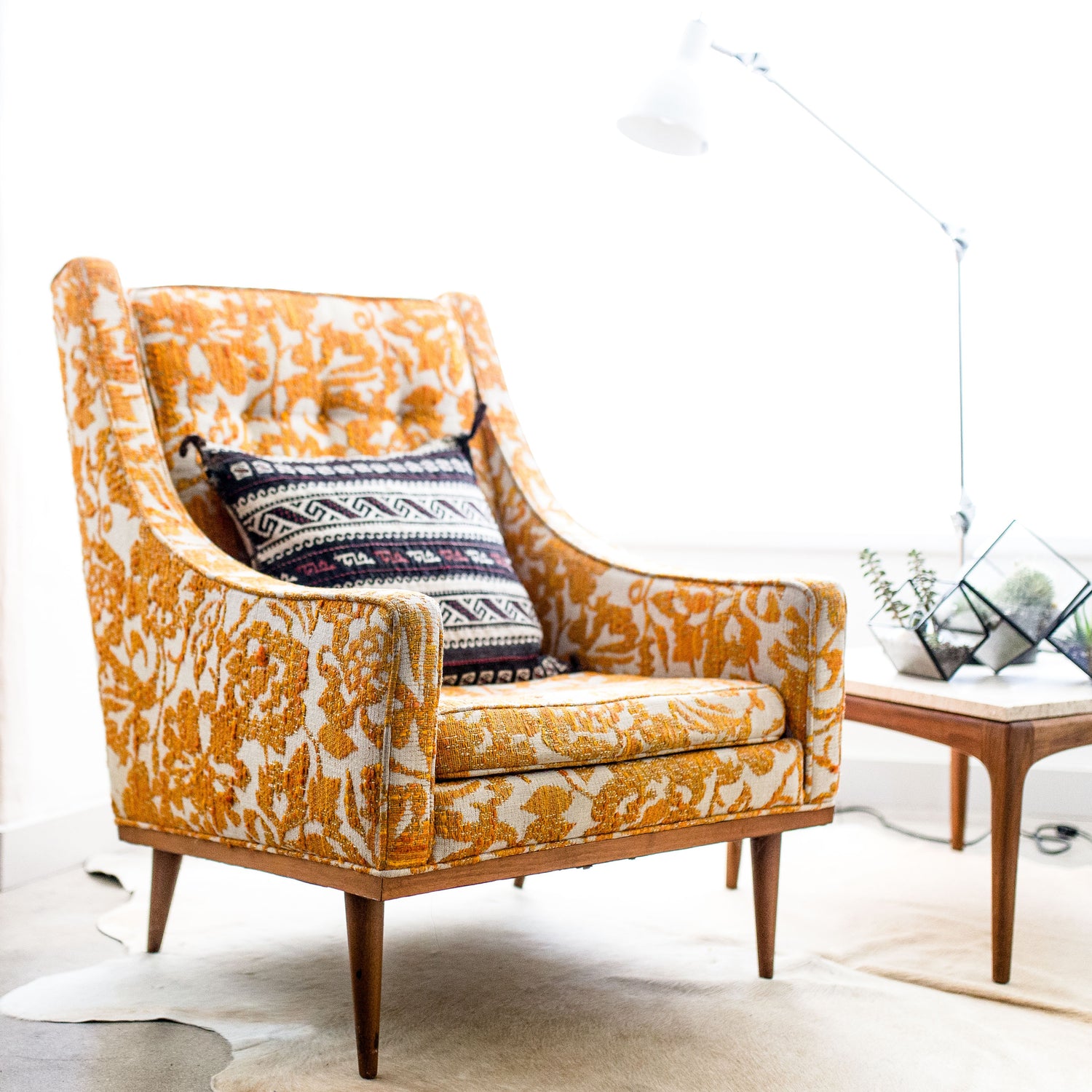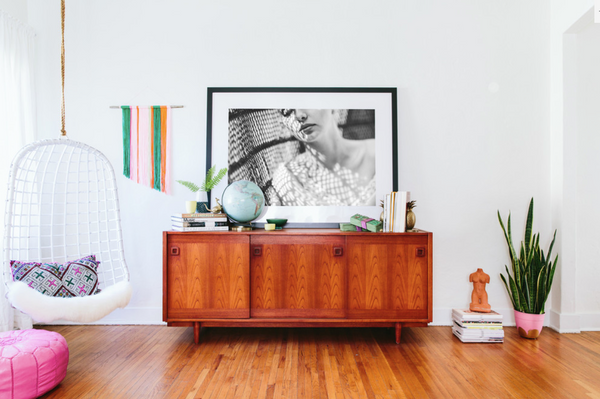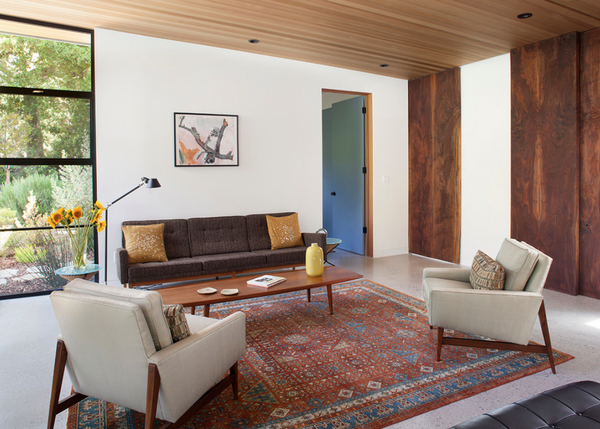
The Ciseal Guide to Buying Quality Handcrafted Furniture
You’re finally ready - that wobbly Ikea couch and those sturdy but mismatched Craigslist dining chairs have served you well, but it’s about time for a few upgrades. This time you’ve saved your dough, and you can’t wait to invest in some amazing handcrafted furniture that will last. One problem remains - while you’ve done your research and know the difference between Mid Century and Art Deco, you have no clue how to look at a piece and know if it will last five years or 50. Here at Ciseal, we make furniture and home decor that we certainly believe will last a lifetime, and these are the things we look for when purchasing new or vintage furniture of our own.

Photo: Taylor + Taylor
Judge It By Its Cover (Wood Furniture)
The first thing you see on a piece of furniture is it’s outer surface, so lets start there. A gorgeous piece of furniture won’t stay that way if it scratches easily, so we’re looking for hardwoods on all exposed surfaces that will be prone to wear. So, the top surface of a desk or console and any drawer fronts should be a wood that doesn’t scratch easily. Oak, teak, walnut, cherry, maple, mahogany, and birch are all great choices here. If you’re not sure, try to press your fingernail into an inconspicuous spot. If it leaves a dent, then it’s reasonable to assume it won’t keep it’s pristine looks for long.
Many assume that veneer (a thin layer of premium wood that’s applied to the outside of a piece) is a sign of low quality, but that’s not always the case. Veneer is often used in very high-end furniture. What you want to look for in a veneered piece is that the veneer is applied cleanly with no bubbles below the surface or lifting corners. And while veneered pieces can only be sanded and refinished so many times before the veneer is sanded away, it really is a simple process to re-veneer a much-loved piece if it’s solidly constructed.
Whether it’s solid wood or veneered, the structure underneath should be a solid wood or sturdy plywood. If its plywood, look for lots of layers. For example, a 3/4 inch thick plywood should have 10 or more layers of a solid hardwood like birch. You definitely want to avoid any piece that has fiberboard, particleboard, pressed wood, or oriented strand board (OSB) for it’s main structural pieces.
Is It Just a Pretty Face? (Wood Furniture Construction)
The biggest determining factor of a piece of furniture’s longevity is its joinery - how the pieces are held together. Dowels (wood rods threaded into opposing holes on adjacent pieces), dovetails (interlocking teeth at corners), mortise-and-tenon (a tapered end of one piece inserted into a hole in an adjacent piece) and screws make for solid furniture that will last. If you lift the piece at one corner it shouldn’t twist or warp. Remember to check that all the legs touch the floor so it won’t wobble or rock.
For furniture pieces with drawers, test each one to make sure it glides smoothly and has stops to prevent it from accidentally pulling all the way out. The drawer bottoms will usually be thinner material, but make sure they’re solid enough to not sag under weight. For doors, does it feel solid when you open them or do they sag a bit? Are the hinges quiet? If the piece has sliding doors, make sure the doors easily glide across their full range of motion.

Photo: One Small Room
The Softer Side (Upholstered Furniture)
A sofa or chair might be comfy in the showroom, but how can you tell if it will stay soft and supportive after years of Netflix binges? If it has removable cushions you’re in luck. Un-zip the cover and take a look inside. If a seat cushion is just foam inside, walk away. A quality, long-lasting cushion will have a block of foam at its core, a layer of cotton, Dacron (a polyester fiber), or down wrapped around the foam, and a muslin cover surrounding it all. The foam on the seat cushions should have a density rating of 1.8 pounds or higher to ensure long lasting support.
Back cushions can be foam blocks (referred to as tight backs) or loose fill (shredded foam, Dacron, down, or other materials). For loose fill, look for cushions that have baffles or compartments that keep the fill from settling at the bottom. Either foam or loose fill can be plenty durable and it’s up to what you find most comfortable.
If you have pets, kids or rowdy friends, you’ll want to know how to clean the upholstery when the need arises. Can you throw the cushion covers in your washer and dryer and get them back on the couch right away? Do they have to be dry cleaned, spot cleaned, or are they vacuum only? And are the cushions reversible? If they are you’ll get a lot more life out of them.
Good Bones (Upholstered Furniture Construction)
Springs are the thing with upholstered furniture. There are lots of different styles (coil, cone, grid, sinuous, etc.), but it’s really up to your personal preference. They can all feel comfortable and last a long time, so test out the couches you’re considering and see if you’re a fan. Be sure to sit in different spots and positions and really sink in to make sure you’ll be comfortable on the edge when your dog claims the corner seat.
To test the rest of the structure, lift the couch or chair at one corner and make sure it doesn’t twist - just like we did with wood furniture. Then squeeze the arms and back to see how well the frame is cushioned.

Photo: Mediterraneo Design Build, Inc.
There are certainly a lot of things to consider when buying furniture - especially if you’re looking for quality pieces that will last you a long time. Hopefully this little guide helps you find furniture you love that lasts a lifetime!

